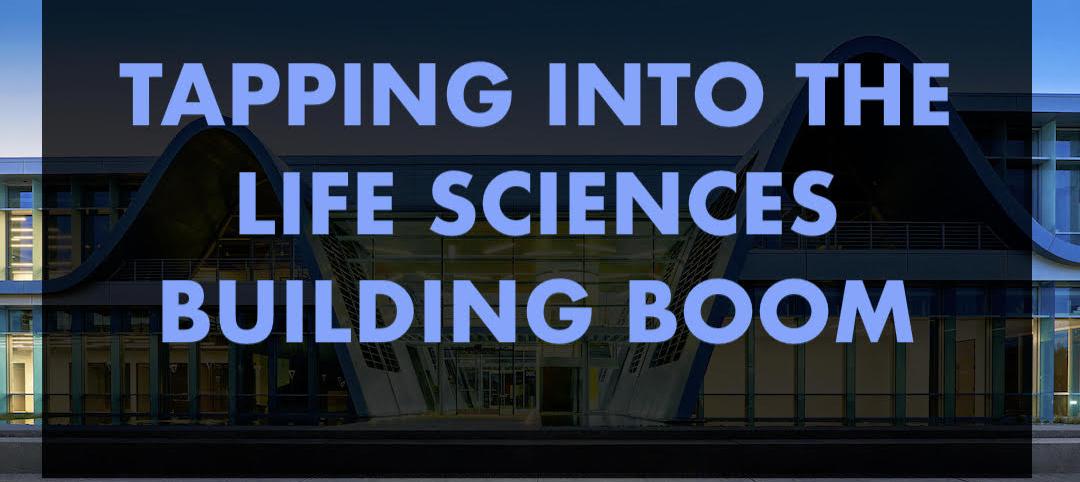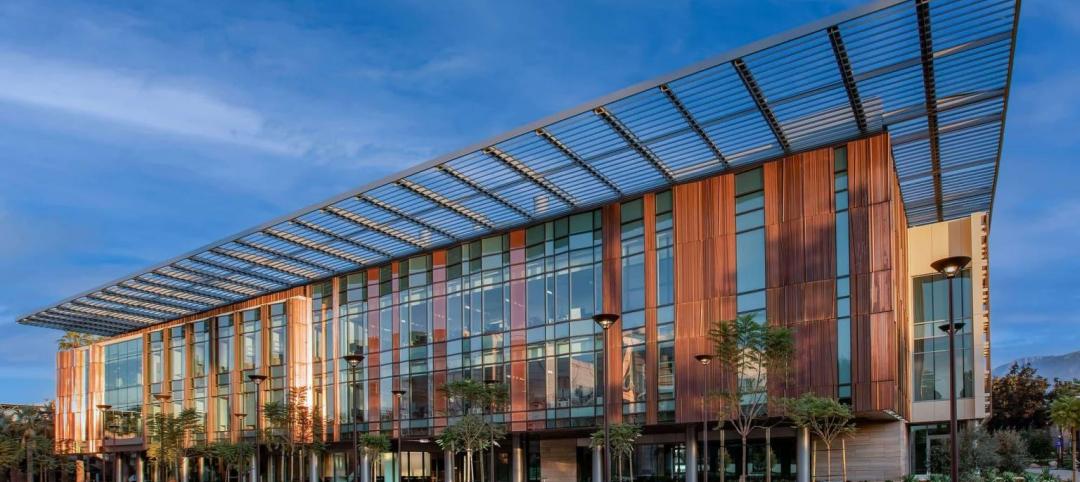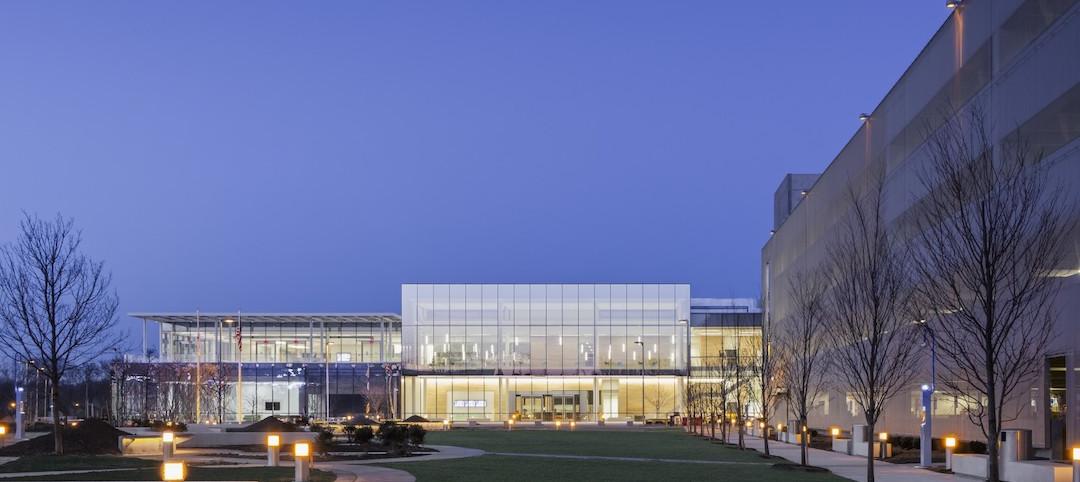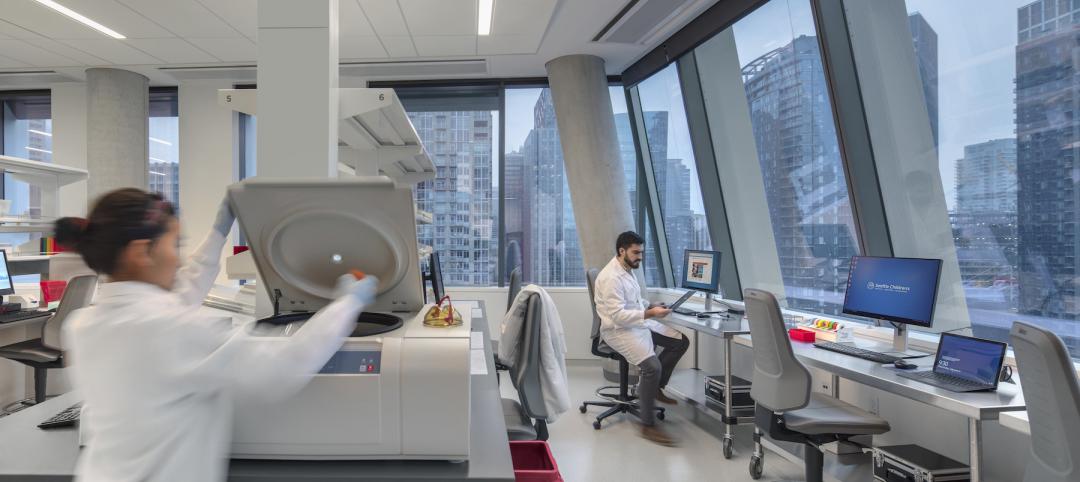In late June, Pfizer, the nation’s second-largest pharmaceutical supplier, broke ground on BioPlace, a $250 million, 285,000-sf R&D and process development facility in Chesterfield, Mo.
The new campus, when completed in mid 2019, will house the company’s BioTherapeutics Pharmaceutical Sciences Group, and consolidate more than 450 employees who currently work at multiple locations around St. Louis, including some who working out of leased space in Monsanto’s research center.
Pfizer intends to hire 80 more employees over the coming years to support research at this 32-acre site.
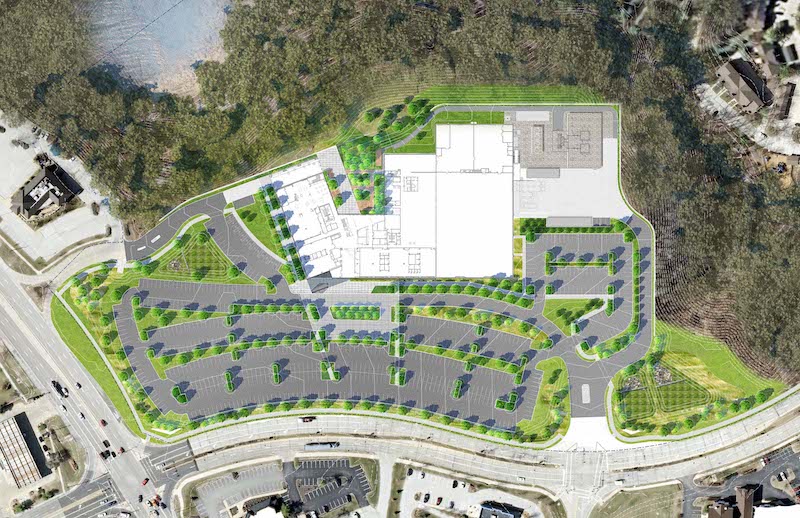
The 32-acre campus will allow Pfizer to consolidate more than 450 of its employees who are scattered at various leased sites around St. Lous. Image: Clayco
The focus of this facility, according to Pfizer’s website, will be on advancing the company’s portfolio in biologics, vaccines, and gene therapy by “developing manufacturing processes and dosage forms applying state-of-the-art analytical technologies.”
The campus will feature a floor plan with flexible laboratory layouts, scientific casework and utility hookups, open office and collaboration spaces, and increased conferencing technologies where researchers can collaborate.
A partnership of Forum Studio and Ewing Cole designed the architecture, landscaping, engineering, interior, and lab process areas for BioPlace’s research and office spaces. Clayco is the design-builder on this project in tandem with its development subsidiary CRG.
Once completed, Pfizer will lease the space from Clayco and CRG, which is providing turnkey build-to-suit services, according to the St. Louis Post-Dispatch.
Related Stories
University Buildings | Jan 11, 2022
Designing for health sciences education: supporting student well-being
While student and faculty health and well-being should be a top priority in all spaces within educational facilities, this article will highlight some key considerations.
Giants 400 | Dec 31, 2021
2021 Science and Technology Sector Giants: Top architecture, engineering, and construction firms in the U.S. S+T facilities sector
HDR, CRB, Jacobs, Skanska USA, and Whiting-Turner Contracting Co. top the rankings of the nation's largest science and technology (S+T) sector architecture, engineering, and construction firms, as reported in the 2021 Giants 400 Report.
Laboratories | Nov 18, 2021
Tapping into the life sciences building boom
Paul Ferro of Form4 Architecture discusses how developers are pivoting to the life sciences sector, and what that means for construction and adaptive reuse.
2021 Building Team Awards | Nov 17, 2021
Caltech's new neuroscience building unites scientists, engineers to master the human brain
The Tianqiao and Chrissy Chen Institute for Neuroscience at the California Institute of Technology in Pasadena wins a Gold Award in BD+C's 2021 Building Team Awards.
Laboratories | Nov 17, 2021
New report finds a biopharma industry being reshaped by disruption
Industry respondents to CRB’s survey weigh in on project delivery, digitization, and off-site manufacturing for life sciences construction.
Laboratories | Oct 14, 2021
‘Next-generation’ Quest Diagnostics lab unveiled in New Jersey
Mark Cavagnero Associates designed the project.
Laboratories | Aug 31, 2021
Pandemic puts science and technology facilities at center stage
Expanding demand for labs and life science space is spurring new construction and improvements in existing buildings.
Giants 400 | Aug 30, 2021
2021 Giants 400 Report: Ranking the largest architecture, engineering, and construction firms in the U.S.
The 2021 Giants 400 Report includes more than 130 rankings across 25 building sectors and specialty categories.
Laboratories | Aug 30, 2021
Science in the sky: Designing high-rise research labs
Recognizing the inherent socioeconomic and environmental benefits of high-density design, research corporations have boldly embraced high-rise research labs.
Laboratories | Aug 25, 2021
Lab design strategies for renovations and adaptive reuse
Lab design experts in HOK’s Science + Technology group outline the challenges organizations must understand before renovating a lab or converting an existing building into research space.





